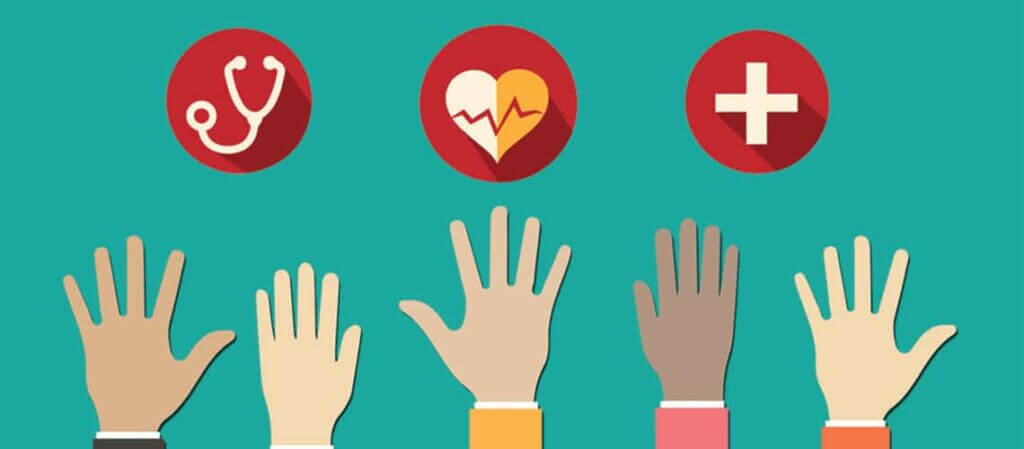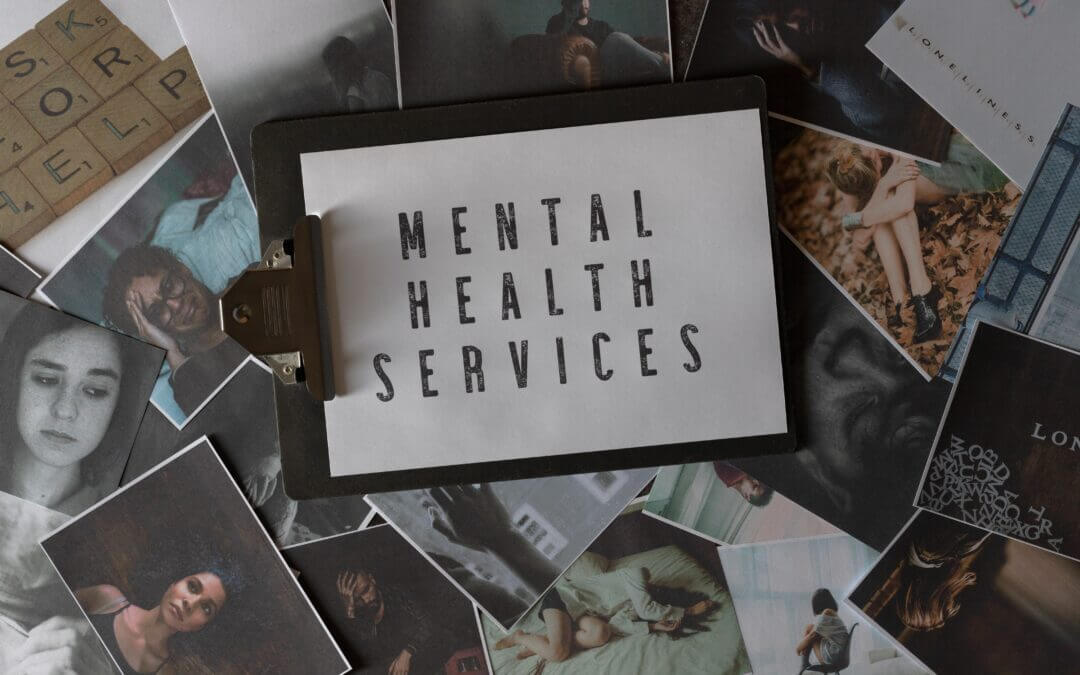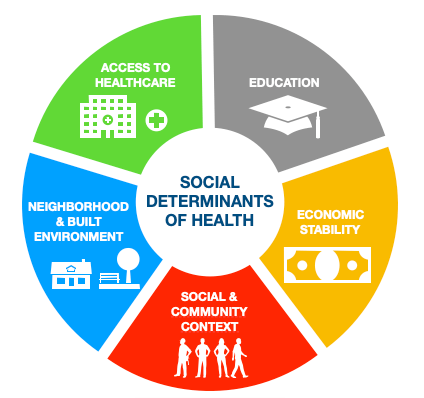When people hear the term healthy, they usually focus on physical connotations, such as low cholesterol levels, good cardiovascular strength and the absence of disease. Unfortunately, countless people suffer from mental health problems that are just as debilitating as some of the worst physical ailments. With professional help from mental health services, most of these people enjoy improved life quality. For many, however, help never comes, because they either fail to seek it or lack appropriate access.
How Common is Mental Illness?
According to the National Alliance of Mental Illness (NAMI), approximately one in five Americans experiences some type of mental illness each year. What’s more, about 10 percent experience serious mental illness that significantly interferes with one or more major life activities.
From schizophrenia to bipolar disorder, there are a number of serious mental health disorders that can make day-to-day living almost impossible. At the same time, countless Americans also live with addiction, depression and anxiety disorder. In fact, the NAMI estimates that, each year, over 18 percent of the U.S. population experiences obsessive-compulsive disorder, post traumatic stress disorder or specific phobias. NAMI statistics also reveal that over 20 million Americans have a substance use disorder, with over half of these people also experiencing co-occurring mental illness.

Consequences of Lack of Treatment
Mental health issues can make life unbearable for the people who have them. At the same time, these problems can have a wider effect on society as a whole, especially when they go untreated or treatment is delayed. The following statistics from NAMI shed light on this fact:
- Serious mental illness costs the U.S about $193.2 billion in lost earnings per year.
- Mood disorders, such as depression and bipolar disorder, are the third most common reason for hospitalization for patients between the ages of 18 and 44.
- American adults living with mental illness die an average of 25 years sooner than others, largely due to treatable conditions.
- 37 percent of students suffering from a mental health condition drop out of high school.
- More than 90% of children who die by suicide suffer from a mental health condition.
The barriers to mental healthcare access are significant issues facing many Americans. More than half of adults with mental illness in the U.S. do not receive mental healthcare treatment, totaling over 27 million adults in the U.S. going untreated. That statistic alone is cause for concern. But mental health issues are far more common than most people realize. According to the U.S. Department of Health and Human Services, 1 in 5 American adults have experienced a mental health issue, and 1 in 20 Americans live with a serious mental illness, such as schizophrenia, bipolar disorder or major depression.
When mental health issues and illnesses go untreated, it can affect a person’s ability to live a fulfilling life and carry on with school, work, or family responsibilities. In addition, it can lead to physical and social problems with serious impacts.
Ensuring that individuals have access to mental healthcare can improve lives and communities. For many, it can dramatically reduce or eliminate the risk of suicide (which is a leading cause of death in the U.S), legal issues, family conflict, employment issues, substance abuse and further mental and physical health problems. However, to increase the use of mental healthcare services, we first have to understand what prevents people from accessing them in the first place. So let’s examine the top 5 barriers to mental healthcare access.
- Financial barriers to mental healthcare
While the Affordable Care Act required medical insurers to provide coverage for behavioral and mental healthcare, the cost of treatment still often limits access to mental health services. Even with insurance or financial assistance, mental healthcare services can be costly. Copays and deductibles add up quickly when a diagnosis requires regular therapy, complicated medication management or intensive treatment programs.
For many individuals, a lack of financial resources prevents them from seeking help at all. For others, a lack of financial resources can lead to inconsistent or inadequate treatment. For instance, a traditional 60-minute therapy session can range from $65 to $250 for those with or without insurance. And a more severe diagnosis, of course, carries heavier lifetime cost burdens. A patient with major depression can spend an average of $10,836 a year on health costs.
- Lack of mental health professionals
While the U.S. is facing an overall shortage of doctors, the shortage of mental health professionals is steeper than any other category. According to the Health Resources and Services Administration, 149 million Americans live in federally-designated Mental Health Professional Shortage Areas (HPSA). In contrast, 93 million Americans live in similarly-designated primary-care shortage areas, and 67 million live in dental health shortage areas.
Other factors compound this overall shortage of healthcare providers. Rural areas often have few to no mental healthcare providers at all, let alone providers with specialties. Urban clinics and providers often have long waiting lists, and patients can suffer for months before they get a basic intake appointment. In contrast, virtual therapy today is much more common and accessible to many. Yet, this option requires a reliable internet connection and can limit care if a person isn’t in a safe, trusted environment.
These factors can make it difficult for someone to find affordable and accessible mental healthcare to get reliable and consistent treatment.
- Mental health education and awareness
Physical injuries and illnesses are typically apparent. They don’t feel well, something hurts or a clinical test shows an abnormality. Mental illnesses, however, are often harder to recognize. Symptoms are often subtle and sometimes even dismissed as “personality” or “attitude” issues. For example, clinical anxiety may be dismissed as “worrying too much,” or depression can often look like “laziness” or “fatigue.”
Serious conditions may not even be obvious to the person suffering or those around them if they don’t share their inner thoughts and feelings. Other times, people assume that their emotional or mental status is normal, not realizing that they are suffering from disordered thinking or clinical symptoms. And if a person doesn’t know something is wrong, it’s unlikely they will seek treatment.
- The social stigma of mental health conditions
Multiple studies have found that the stigmas associated with mental illness often prevent people from accessing treatment. On the one hand, a person’s own beliefs about mental illness can prevent them from acknowledging their illness or sticking with treatment.
On the other hand, the risk of facing discrimination in cultural, social and professional circles creates a huge barrier. People may fear that family and friends will avoid them or treat them differently. They may also be concerned that disclosing a mental health condition can lead to adverse treatment and perceptions at work.
- Racial barriers to mental healthcare access
There are significant disparities in mental healthcare access among different racial and ethnic groups. One survey finds that white adults (23%) are more likely than black (13.6%) and Hispanic (12.9%) adults to receive any mental health treatment. These disparities stem from everything covered above and a lack of diverse representation in the mental health field, language barriers and implicit bias.
According to research from American Psychological Association (APA), 84% of U.S. psychologists are white, and the Bureau of Labor Statistics found that close to 70% of U.S. social workers and 88% of mental health counselors are white. People are less likely to seek help if they think their doctor can’t understand or empathize with their background or cultural differences and experiences.
The good news is that APA is also seeing more people of color earning psychology degrees, a trend that is enhancing the diversity of the psychology workforce.
Providing Help
When allowed to intervene in a timely manner, mental health services can help lower health costs and free up limited resources. Studies indicate that people use medical services 90 percent less frequently after receiving appropriate mental health care. Mental health services also reduce the risk of chronic diseases related to stress, anxiety and substance abuse.
Most importantly, mental health services save lives, while improving the outlook for people who may feel hopeless and lost. If you believe you may be suffering from a mental illness or if you know someone who is, take positive steps toward recovery by contacting a mental health professional today.


